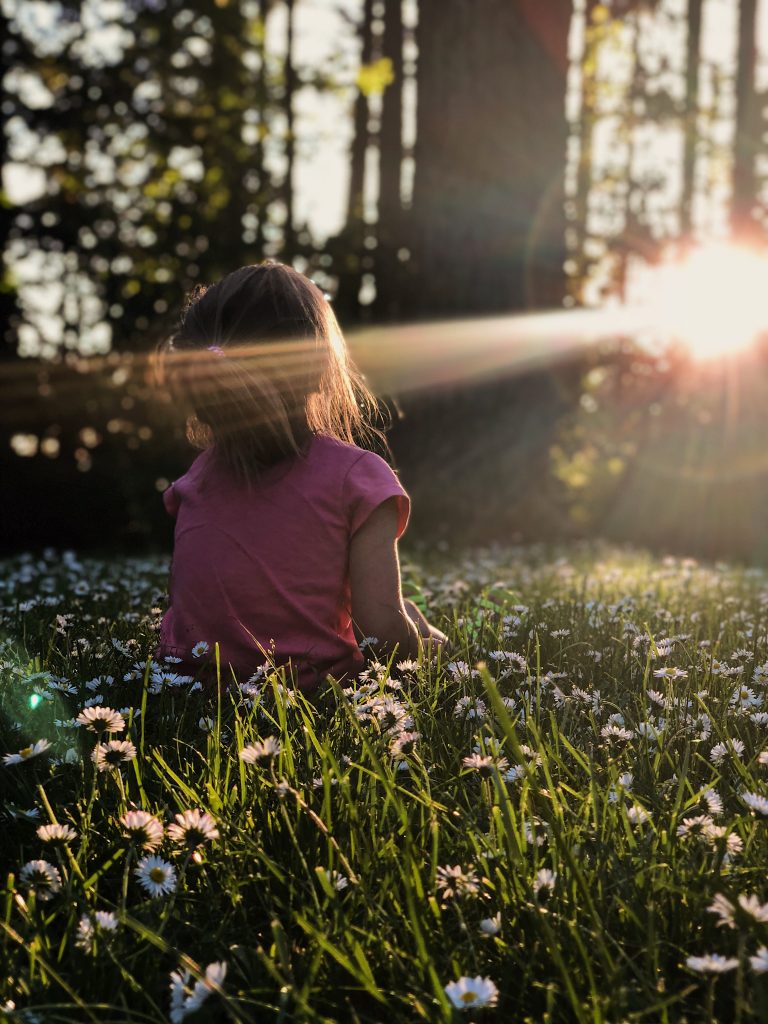Mindfulness is a blend of tuning into our mind and body, and being present in the moment. Teaching kids mindfulness gives them a powerful tool that can help them navigate some of life’s trickiest challenges.
Whether it’s dealing with self-esteem issues, learning social skills, or dealing with stress, all children will encounter tough emotional situations. Luckily, mindfulness is a tool parents can teach their children to help them cope. Tiffany Trask recently started teaching yoga and mindfulness for children of all ages and abilities through her studio, Beats Unique. She also has almost two decades of experience working with children in various settings, including pediatric speech and language pathology.
Benefits of Mindfulness for Kids
Tiffany believes that teaching kids mindfulness by introducing them to movement, breath, and mind-body connection sets them up for success in life. These skills can help them stay in touch with their physical and emotional needs. “By learning to quiet the mind and be aware of their senses, kids can really learn things like self-regulation and self-soothing, which can help them slow down and make informed decisions in times of stress,” Tiffany says.
People are surprised how quickly kids will adapt to the idea of stillness because it seems contrary, but really that’s why they gravitate to it; stillness gives them balance.
Tiffany Trask
While yoga and mindfulness aren’t new, the benefits of practicing them are becoming more well established. “There’s research coming out that shows mindfulness helps lessen activation of the amygdala, which is where we get our fight or flight response,” Tiffany says, “Mindfulness activates the hippocampus instead, which controls learning and memory, and our prefrontal cortex, which regulates emotions, behaviors, and decision making.” The prefrontal cortex doesn’t fully develop until our 20s, which means learning mindfulness young sets children up for a lifetime of increased problem solving, creativity, and emotional agility.
How to Make Mindfulness Kid-Friendly
While yoga and mindfulness are ancient practices, there’s nothing that says they can’t be fun for kids. For instance if your kids love dragons, when you’re breathing, talk about being a dragon ready to spit fireballs; they should feel the warm breath in their abdomen and up into their chest and throat. Tiffany says, “One of my favorite things to bring mindfulness to kids is giving them a breathing buddy. It’s a stuffed animal they can put on their tummy when they’re laying down, and they can see the buddy move with them as they breathe.” Combining the ideas of mindfulness with things your children relate to or enjoy makes them more likely to stick with the practice long term.
For busy families who worry about adding another activity to their daily routine, Tiffany says not to worry about making it a huge deal. “Mindfulness doesn’t have to be an elaborate thing where you sit on cushions for an hour as a family,” she says, “just start out with five minutes in the morning to sit quietly together and breathe, and see how that feels.” Check in with your family and see how they feel after you’ve practiced together for a few days. If it feels helpful, keep going! If not, talk about what you do and don’t like, and see if there are other ways you can practice.
Looking for practical ways to teach your kids mindfulness? Here are some of Tiffany’s favorites:
- Morning gratitude: everyone picks one thing they are thankful for in the morning before the day begins. You can do this on your own, or share over breakfast.
- Body scan: starting with the toes, scan through the body noticing each part.
- Watching clouds: sit outside or lay in the grass and watch the clouds. You can look for fun shapes too!
- Family mantras: come up with affirmations that you can all say every day, such as “I am brave. I am kind. I am smart. I am loved.”
- Bumble Bee Breath: take a deep breath in, and on the exhale out and buzz for as long as you can.
Practice Mindfulness as a Parent
Being a good model can also help your kids stick with their mindfulness practice. If you’re feeling stressed or anxious, take a second to breathe deeply — and verbalize while you do it. For example, say, “I’m upset, and I need a second to breathe,” then take a few deep breaths. Not only are you showing your children how to be mindful, you’re showing them it’s okay to take a second to pause and deal with your emotions rather than simply react to them.
While yoga is about our physical being, mindfulness is about how we are internally; how we’re feeling, what our inner sensations are, and what our body needs. It’s a practice the entire family can do together, or each member individually. What’s important about teaching kids mindfulness is helping them connect with what’s going on inside, and learning to love and care for themselves.
WORDS: ASHLEY JOHNSON

